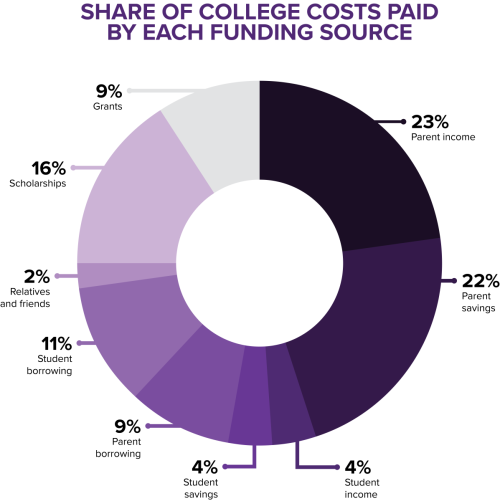How To Pay for College in 6 Important Steps
There’s no doubt that continuing education after high school brings a lot of benefits to students and many wonder how to pay for it. Last year, families spent an average of $25,313 on tuition and college expenses, but more than half of them paid for college with free money from scholarships and grants. A college education can be more affordable if you’re willing to invest some time in learning and researching the possibilities. Unlike most investments, this investment (of time) is guaranteed to give great returns. Here are 6 important steps to pay for college.
1) Complete the FAFSA
The most important step for finding ways to pay for college is to complete the Free Application for Federal Student Aid (FAFSA). Complete the FAFSA to see if you qualify for federal money, including Pell Grants, work-study, and subsidized student loans.
The biggest provider of grants and scholarships is the federal government. That is why it is important to complete the FAFSA every year. Colleges use the FAFSA to prepare your financial aid offer letter. This letter shows the amount of grants and scholarships offered by the federal government and university as well as the amount available for federal student loans.
Everyone should fill out the FAFSA as soon as possible. Some colleges offer money on a first-come, first-served basis. The sooner you file the better. Parents/guardians or students can complete the application starting in October of each year. High school students are eligible to fill it out in October of their Senior year.
2) Secure Grants and Scholarships
Next, look for grants and scholarships as this money does not need to be paid back. (Yes, it is free money!) Most grants are need-based and given to students based on family income. Your student could get merit-based scholarships for good grades or having unique talents, achievements, or interests.
Universities, corporations, private philanthropic groups, and local organizations provide over 1.7 million scholarships every year so it is well worth your time to look for scholarships (and grants) that match your qualifications. Search for private grants and scholarships using the U.S. Department of Labor’s free scholarship search tool. Check with your school's guidance office to find local financial aid opportunities.
3) Get a Part-time job
Another way to pay for college is for the student to get a part-time job. A college job is a great option because it provides income, work experience, and potentially useful connections. Many part-time jobs are on-campus. Data has shown that students who work on campus typically have a one-point higher grade-point average than those working off-campus.
For those who are eligible, the federal work-study program funds part-time jobs for college students with financial need. The financial aid offer letter includes work-study if the student is eligible. There are some great advantages to these part-time, work-study jobs! If you are eligible for this funding, there are numerous on-campus opportunities to pursue but you do need to apply for them.
4) Tap Savings
It’s never too late to start saving. Savings is a big portion of how the average family pays for college. On average, families cover 26% of college costs through savings. There are savings options to consider, like 529 plans. Investments in these plans may qualify for tax deductions, are tax deferred and tax free for qualified education expenses.
The graph provided shows on average the share of college costs paid by each funding source (Sallie Mae report, 2019)
5) Borrow Using Federal Student Loans 
If you do not have enough grants, scholarships, and savings to cover the cost of college, you will need to borrow money. Consider using a federal loan first. Federal loans have benefits such as income-driven repayment plans, postponement options, debt consolidation, and loan forgiveness programs that private loans do not offer. Student loans are a great way for students to establish credit.
A number of different types of federal student loans are available to students and parents. Regardless of your income, filling out the FAFSA qualifies you for unsubsidized federal student loans – and many qualify for subsidized loans.
How much can I borrow in federal student loans?
The amount of money you can borrow depends on your loan type, year in school, and the total amount borrowed to date. Remember, you don’t have to accept all the aid you’re offered — especially student loans. Check out the Federal student aid handout to learn more
6) As a Last Resort, Use Private Loans
Private loans are offered by private institutions such as banks and credit unions. Private loans typically have less flexibility for the borrower and are more expensive than federal loans. If you do need to use private student loans, shop around to find a lender that offers you the lowest interest rate and the most generous borrower protections.
Now you understand the ways to pay for college.
Paying for college can seem overwhelming at times. Planning and learning about the different options can help change your perspective from fear to confidence. There are tools to calculate how much you can expect to pay for education expenses which is a great thing to do well in advance of applying for colleges. The more you know, the more you can possibly save. Professionals in the University of Northern Iowa Office of Financial Aid & Scholarships are available to answer your questions. Consider including your teen in these conversations. After all, it is their financial future at stake.
